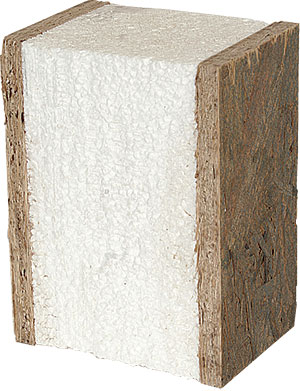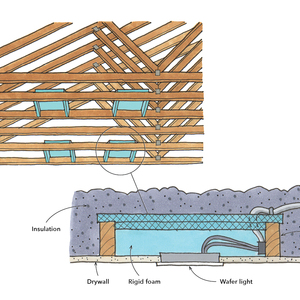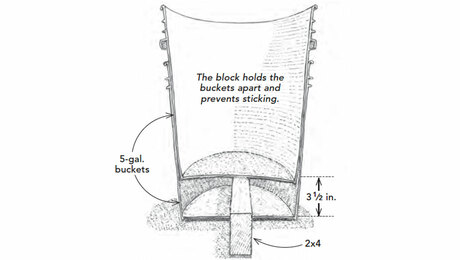What's the Difference: Structural Insulated Panels (SIPS)
EPS, polyurethane/polyisocyanurate, and XPS all have the same roots

Structural insulated panels (SIPs) are composed of rigid cores of foam plastic typically sandwiched between layers of oriented-strand-board (OSB) sheathing. SIPs are used to make floors, walls, and roofs that are both strong and energy-efficient. The basic SIP typically contains one of three types of foam insulation. Each has different insulating values, building characteristics, and availability.
Expanded Polystyrene (EPS)

More than 80% of SIPs manufactured in the United States have cores made of expanded polystyrene foam (EPS). It is the most readily available and least-expensive foam on the market, making it popular among SIP manufacturers. However, EPS foam has the lowest R-value of any core material, at 3.85 per inch.
The most significant benefit of EPS foam is its low melting point. This characteristic reduces the foam’s fire resistance but allows builders to carve EPS with heated cutting tools to make on-site modifications for studs, plates, and other in-wall installations.
Pros
• Low melting point, which translates to easy on-site modifications
• Readily available, least expensive
• Pentane expanding agent (low environmental impact)
Cons
• Lowest R-value
• Walls need to be thicker to maintain required insulating values
• High perm rating of 3
• Poor fire resistance
Manufacturers
Enercept Inc. www.enercept.com
FischerSips Inc. www.fischersips.com
Premier Building Systems www.pbspanels.com
Winter Panel www.winterpanel.com
Polyurethane/Polyisocyanurate
1

Polyurethane and polyisocyanurate are so similar in chemical composition that they can be considered the same material. Cost and on-site modifications are similar to those of XPS foam, but polyurethane and polyisocyanurate are the only core materials that go through a process known as thermal drift, which is the degradation of R-value over time. Once settled, these foams maintain an R-value of roughly 7 per inch, the highest insulating value of any SIP core material. Polyurethane and polyisocyanurate are more expensive than EPS foam. Their availability nationwide is limited, but not to the extent of XPS foam.
Pros
• Highest R-value of any foam
• Thin walls can be made while still maintaining optimum insulating performance
• Low perm rating, around 1
Cons
• HCFC-based expanding agent (HCFCs are ozone-depleting)
• Moderate availability
• Expensive
• High melting point, which complicates onsite modifications
Manufacturers
K.C. Panels www.kcpanels.com
Murus Industries www.murus.com
Thermocore www.thermocore.com
Extruded Polystyrene (XPS)

Extruded polystyrene (XPS) has greater performance qualities than EPS foam. However, the availability of XPS is very low; only one manufacturer produces XPS exclusively. It is more expensive than EPS but has a higher R-value of 5 per inch. An XPS SIP costs about the same as a polyurethane-filled SIP but does not have as high an R-value.
XPS is denser than EPS, has greater shear strength than polyurethane, and has a high melting point. That can complicate construction, however: Panel modifications have to be made with panel routers and drills, a more laborintensive job than using heated cutting tools.
Pros
• Stronger than EPS foam
• Thin walls can be made while still maintaining optimum insulating performance
• High R-value
• Low perm rating of 1
Cons
• HCFC-based expanding agent
• Very low availability
• High melting point, which complicates onsite modifications
• More expensive than EPS
Manufacturers
Foard Panel www.foardpanel.com
Photos by Krysta S. Doerlfer, except where noted
Fine Homebuilding Recommended Products
Fine Homebuilding receives a commission for items purchased through links on this site, including Amazon Associates and other affiliate advertising programs.

Caulking Gun

Great Stuff Foam Cleaner

Respirator Mask


























